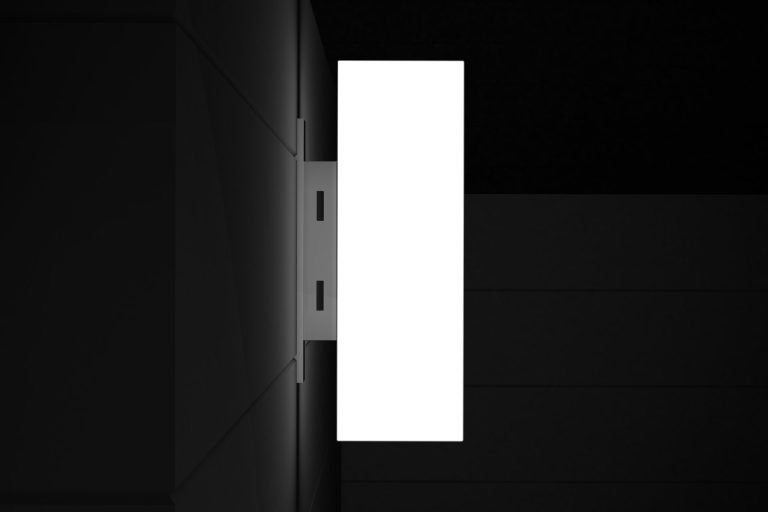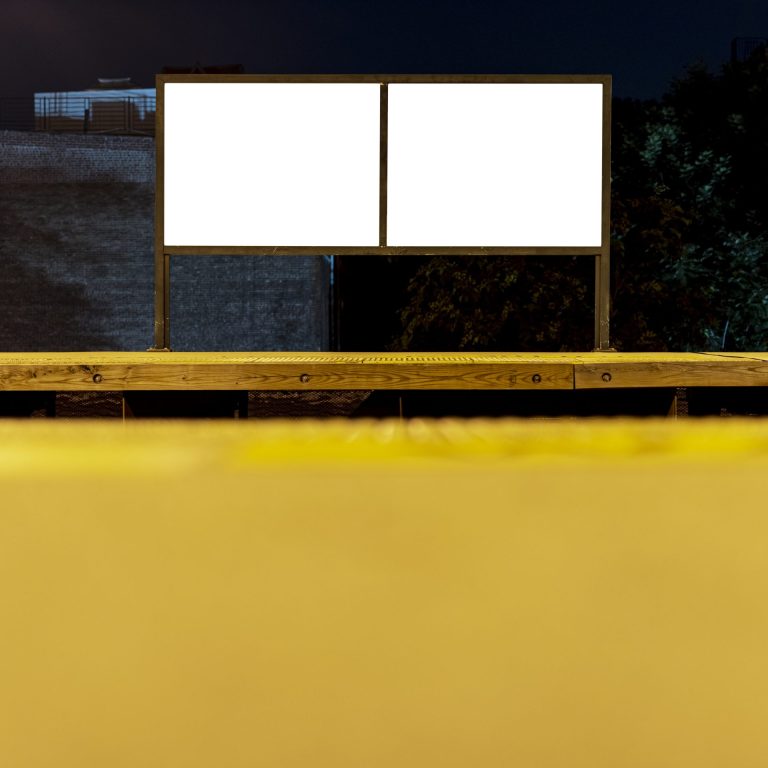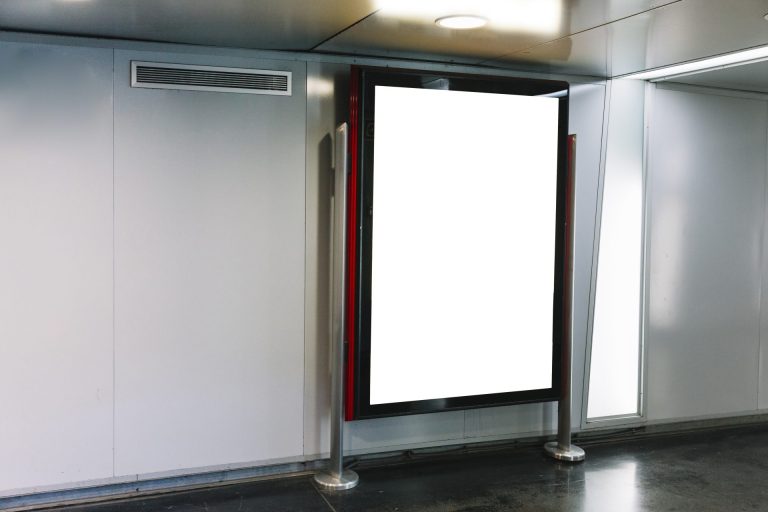Revolutionizing Visibility: The Impact of OOH Advertising in Dubai's Dynamic Market
In the heart of the UAE, Dubai stands as a testament to modernity and innovation, where opportunities flourish against a backdrop of breathtaking architecture and vibrant culture. Among the myriad of strategies vying for attention, Out-of-Home (OOH) advertising emerges as a powerhouse for brands looking to capitalize on the city’s dynamic market. With its stunning billboards, eye-catching displays, and strategic placements throughout bustling districts, OOH advertising not only captivates the gaze of passersby but also fosters a connection with a diverse audience. As the demand for visibility intensifies, businesses are turning to creative and dynamic OOH formats to enhance brand presence and engagement. This article delves into how OOH advertising is revolutionizing visibility in Dubai, exploring the unique strategies that brands are employing to make an unforgettable impression and drive growth in this competitive landscape. Join us as we uncover the transformative power of OOH in one of the world’s most exciting markets.
The Landscape of Dubai's Advertising Market
Dubai is a city of superlatives, where everything is grand, luxurious, and innovative. The advertising market in Dubai reflects this ethos, thriving amidst the city’s rapid growth and development. The emirate’s economy, heavily driven by sectors such as tourism, real estate, and finance, is ripe with opportunities for businesses to reach a diverse and affluent audience. Dubai’s cosmopolitan population, combined with its status as a global business hub, makes it an attractive target for advertisers looking to make a significant impact.
In this vibrant market, traditional advertising methods coexist alongside cutting-edge digital strategies, creating a multifaceted landscape. However, Out-of-Home (OOH) advertising has carved out a unique niche, offering a tangible, immersive experience that digital formats often struggle to replicate. From towering billboards along Sheikh Zayed Road to digital screens in bustling shopping malls, OOH advertising seamlessly integrates into the urban environment, becoming a part of the city’s visual identity.
The strategic placement of OOH advertisements in high-traffic areas ensures maximum visibility and engagement. Whether it’s commuters on the metro, tourists exploring the city’s attractions, or residents going about their daily routines, OOH advertising captures the attention of a broad audience. This ability to reach people in their everyday environments is a key factor in the enduring success of OOH advertising in Dubai’s dynamic market.
Key Benefits of OOH Advertising in Dubai
One of the primary benefits of OOH advertising in Dubai is its ability to deliver high visibility and reach. Billboards, digital displays, and other OOH formats are prominently placed in locations with heavy foot traffic and vehicle circulation, ensuring that ads are seen by a large number of people. This extensive reach is particularly valuable in a city like Dubai, where the population is constantly on the move, whether commuting to work, shopping, or attending events.
OOH advertising also offers a level of permanence and durability that other forms of advertising may lack. Unlike digital ads that can be skipped or ignored, OOH advertisements remain in place for weeks or even months, continuously reinforcing the brand message. This constant presence helps to build brand recognition and recall, making it more likely that consumers will remember and choose the advertised brand when making purchasing decisions.
Another significant advantage of OOH advertising is its ability to create a lasting impression through creative and eye-catching designs. The large format and high-quality visuals of OOH ads allow for bold, impactful messaging that captures attention and sparks interest. In a city known for its aesthetic appeal and architectural marvels, OOH advertisements that are visually stunning and innovative can stand out and make a memorable impact on the audience.
Innovative OOH Advertising Formats and Technologies
Dubai’s advertising market is at the forefront of innovation, and OOH advertising is no exception. Traditional billboards and posters have evolved into dynamic, interactive displays that engage and captivate audiences in new ways. Digital OOH (DOOH) advertising, in particular, has revolutionized the industry, offering a range of new possibilities for advertisers.
One of the most exciting developments in DOOH advertising is the use of digital screens and LED displays. These high-definition screens can display vibrant, animated content that catches the eye and holds attention. Additionally, digital screens offer flexibility, allowing advertisers to change their messaging quickly and easily, and even tailor it to specific times of day or audience segments.
Augmented reality (AR) and virtual reality (VR) are also making their mark on OOH advertising in Dubai. These technologies create immersive experiences that engage consumers on a deeper level. For example, an AR-enabled billboard might allow passersby to interact with the advertisement through their smartphones, creating a memorable and shareable experience. Similarly, VR installations can transport users to a different world, providing an unforgettable brand encounter.
Interactive kiosks and smart billboards are other innovative OOH formats gaining traction in Dubai. These installations often include touchscreens or sensors that allow users to engage with the content, providing a more personalized and engaging experience. For example, a smart billboard might display different advertisements based on the time of day or the demographic profile of passersby, ensuring that the message is always relevant and impactful.
Target Audience Insights for OOH Advertising in Dubai
Understanding the target audience is crucial for the success of any advertising campaign, and OOH advertising in Dubai is no exception. The city’s diverse population includes residents from around the world, each with their own unique preferences, behaviors, and consumption habits. To effectively reach and resonate with this audience, advertisers must conduct thorough market research and develop targeted strategies.
One key insight is the importance of cultural sensitivity and relevance in OOH advertising. Dubai is home to a mix of expatriates from various cultural backgrounds, as well as a significant local Emirati population. Advertisements that respect and reflect the cultural values and traditions of these groups are more likely to be well-received and effective. This might involve using appropriate language, imagery, and themes that resonate with the target audience.
Another important consideration is the lifestyle and mobility patterns of Dubai’s residents and visitors. The city’s well-developed infrastructure and public transportation system mean that people are constantly on the move, whether commuting to work, shopping, or exploring the city’s attractions. As a result, OOH advertisements placed in high-traffic areas such as metro stations, shopping malls, and major roadways are likely to reach a large and diverse audience.
Finally, understanding the digital habits of Dubai’s population can enhance the effectiveness of OOH advertising. Many residents and visitors are tech-savvy and active on social media, providing opportunities for integrated campaigns that combine OOH and digital elements. For example, a billboard might include a QR code or social media hashtag, encouraging passersby to engage with the brand online and share their experiences, amplifying the reach and impact of the campaign.
Case Studies: Successful OOH Campaigns in Dubai
Several brands have leveraged the power of OOH advertising in Dubai to achieve remarkable success. One notable example is the campaign by Emirates Airline, which used a combination of traditional billboards and digital displays to promote its new routes and services. The campaign featured stunning visuals of exotic destinations and compelling messages that highlighted the airline’s superior service and connectivity. Placed in strategic locations such as Sheikh Zayed Road and Dubai International Airport, the advertisements reached a wide audience of both residents and tourists, resulting in increased brand awareness and ticket sales.
Another successful OOH campaign in Dubai was conducted by Coca-Cola, which used interactive billboards and vending machines to engage consumers in a fun and memorable way. The campaign, titled “Share a Coke,” encouraged people to personalize their Coke bottles with their names or the names of their friends and family. The interactive billboards allowed users to input their names and see them displayed on the screen, creating a sense of excitement and personalization. The campaign generated significant buzz and social media engagement, reinforcing Coca-Cola’s brand image as a fun and inclusive brand.
A third example is the campaign by luxury car brand Mercedes-Benz, which used digital screens and augmented reality to create an immersive and interactive experience for potential customers. The campaign featured a virtual test drive experience, where users could see themselves driving a Mercedes-Benz car on the screen, complete with realistic visuals and sound effects. Placed in high-end shopping malls and prominent locations, the campaign successfully captured the attention of affluent consumers and generated interest in the brand’s latest models.
The Role of Digital OOH Advertising
Digital OOH (DOOH) advertising plays a pivotal role in the evolution of the OOH advertising landscape in Dubai. With the city’s reputation for embracing cutting-edge technology and innovation, DOOH has become an integral part of the advertising strategy for many brands. The dynamic and versatile nature of DOOH allows advertisers to create more engaging and impactful campaigns that resonate with the tech-savvy audience in Dubai.
One of the key advantages of DOOH advertising is its ability to deliver real-time, contextually relevant content. Unlike traditional static billboards, digital screens can display multiple messages throughout the day, tailored to different audience segments and times. For example, a digital billboard might show advertisements for breakfast items in the morning, lunch specials in the afternoon, and dinner promotions in the evening. This level of customization ensures that the content is always relevant and engaging, increasing the likelihood of capturing the audience’s attention.
DOOH advertising also offers enhanced measurement and analytics capabilities, allowing advertisers to track the performance of their campaigns in real-time. With the integration of advanced technologies such as facial recognition and geolocation, advertisers can gather valuable data on audience demographics, engagement levels, and foot traffic patterns. This data-driven approach enables brands to optimize their campaigns, making adjustments as needed to maximize impact and return on investment.
Furthermore, the interactive and immersive nature of DOOH advertising creates opportunities for brands to engage with consumers in new and exciting ways. From touchscreens and motion sensors to augmented reality and virtual reality experiences, DOOH installations can provide a more personalized and memorable brand encounter. For example, a digital kiosk might allow users to browse product catalogs, watch video demos, and even make purchases directly from the screen, seamlessly blending the physical and digital shopping experience.
Challenges and Considerations in OOH Advertising
While OOH advertising offers numerous benefits, it also presents certain challenges and considerations that advertisers must navigate to ensure success. One of the primary challenges is the high cost associated with OOH placements, particularly in prime locations within Dubai. The demand for visibility in high-traffic areas can drive up prices, making it essential for brands to carefully plan and allocate their budgets to maximize the return on investment.
Another consideration is the regulatory environment in Dubai, which governs the placement and content of OOH advertisements. Advertisers must comply with local regulations and guidelines, which may include restrictions on the size, format, and content of advertisements. For example, certain areas may have limitations on the use of digital screens or require specific permits for installation. It is crucial for advertisers to work closely with local authorities and agencies to ensure compliance and avoid potential fines or penalties.
The competitive nature of the advertising market in Dubai also poses a challenge for brands looking to stand out. With numerous advertisements vying for attention in the city’s bustling environment, creating a unique and memorable campaign can be difficult. Advertisers must invest in creative and innovative designs that capture the imagination and resonate with the audience. This may involve collaborating with talented designers, artists, and technologists to develop visually stunning and impactful OOH advertisements.
Finally, measuring the effectiveness of OOH advertising can be challenging, particularly for traditional static formats. While digital OOH offers advanced analytics and measurement capabilities, traditional billboards and posters may rely on more indirect methods of tracking performance, such as surveys, foot traffic analysis, and sales data. Advertisers must be strategic in their approach to measurement, using a combination of quantitative and qualitative metrics to assess the impact and success of their campaigns.
Future Trends in OOH Advertising in Dubai
As Dubai continues to evolve and grow, the future of OOH advertising in the city looks promising, with several emerging trends set to shape the industry. One significant trend is the increasing integration of technology and data into OOH advertising. With advancements in artificial intelligence, machine learning, and big data analytics, advertisers can create more targeted and personalized campaigns that resonate with specific audience segments. For example, AI-powered algorithms can analyze real-time data to optimize ad placements and content, ensuring maximum relevance and impact.
Sustainability is also becoming a key focus in the future of OOH advertising. As environmental concerns gain prominence, advertisers are exploring eco-friendly alternatives to traditional materials and methods. This includes the use of energy-efficient digital screens, biodegradable posters, and environmentally friendly printing techniques. Brands that prioritize sustainability in their OOH campaigns can appeal to the growing number of environmentally conscious consumers in Dubai, enhancing their brand image and reputation.
The rise of smart cities and the Internet of Things (IoT) is another trend that will influence the future of OOH advertising. As Dubai continues to develop its smart city infrastructure, there will be more opportunities for connected and interactive OOH installations. For example, smart billboards equipped with sensors and connectivity can deliver real-time, contextually relevant content based on environmental factors such as weather, traffic conditions, and air quality. This level of interactivity and personalization can create more engaging and impactful advertising experiences.
Finally, the integration of OOH advertising with other digital channels will become increasingly important. Cross-channel campaigns that combine OOH with social media, mobile, and online advertising can create a cohesive and immersive brand experience. For example, an OOH advertisement might include a call-to-action that directs users to a branded app or website, where they can access additional content, promotions, and interactive features. This seamless integration of physical and digital touchpoints can enhance engagement and drive conversions.
Conclusion: Embracing OOH Advertising for Brand Growth
In a city as dynamic and vibrant as Dubai, OOH advertising offers a powerful platform for brands to enhance their visibility, engage with a diverse audience, and drive growth. The strategic placement of eye-catching billboards, digital displays, and interactive installations in high-traffic areas ensures maximum reach and impact. By leveraging innovative formats and technologies, brands can create memorable and engaging campaigns that resonate with the tech-savvy and culturally diverse population of Dubai.
While OOH advertising presents certain challenges, such as high costs and regulatory considerations, the benefits far outweigh the obstacles. Brands that invest in creative and carefully planned OOH campaigns can achieve significant brand recognition, recall, and loyalty. Moreover, the future of OOH advertising in Dubai looks promising, with emerging trends such as technology integration, sustainability, and smart city infrastructure set to shape the industry.
As the demand for visibility intensifies in Dubai’s competitive market, businesses must embrace OOH advertising as a key component of their marketing strategy. By understanding the unique landscape of Dubai’s advertising market, targeting the right audience, and leveraging innovative formats and technologies, brands can revolutionize their visibility and achieve remarkable growth in one of the world’s most exciting markets.




